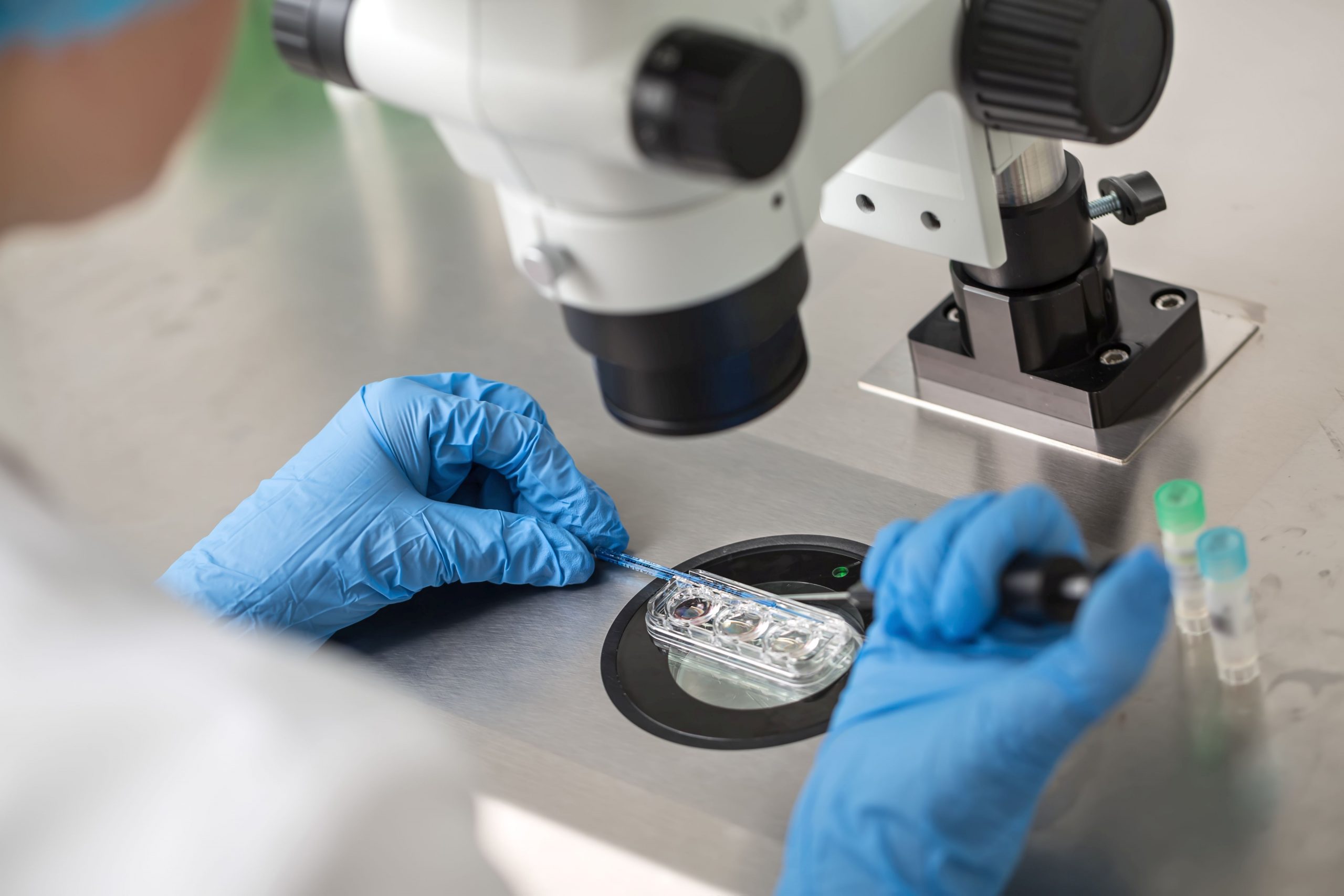Currently, as many as 15% of couples in the world have a problem getting pregnant. For many of them, the only hope for having children is in vitro fertilization. Thanks to access to assisted reproduction methods, infertile couples can fulfill their dream of a child.

Currently, as many as 15% of couples in the world have a problem getting pregnant. For many of them, the only hope for having children is in vitro fertilization. Thanks to access to assisted reproduction methods, infertile couples can fulfill their dream of a child.
In our article we have collected the most important information about in vitro fertilization. We also discussed how the whole process works step by step. We invite you to read!
Egg collection
The IVF procedure consists essentially of three stages – hormonal stimulation, collection of eggs and their fertilization in laboratory conditions and the transfer of the embryo into the uterus. During stimulation, a woman receives special hormonal injections that are to increase the number of mature follicles. Then the cells are taken from the woman by puncturing the ovary. This procedure is called ovarian puncture.
Connection of the egg with the sperm
It looks the same as during natural fertilization, with the difference that in vitro everything takes place in laboratory conditions. The in vitro fertilization process itself can be carried out by many methods. Currently, one of the most commonly used techniques of in vitro fertilization, giving the best results is the IMSI (Intracytoplasmic Morphologically Selected Sperm Injection) method, which consists of intracytoplasmic injection of appropriately selected (best in terms of quality) sperm.
Once the sperm has been selected, it is placed inside the egg using the so-called micromanipulator. In this way, two gametes – a male sperm and a female egg – merge with each other, giving new life. The embryo is then placed in a special incubator, which is to reproduce conditions similar to natural and matures in it for another 2-3 days (sometimes the culture lasts up to 5 or 6 days). Everything, of course, takes place under the watchful eye of an embryologist who observes whether the embryo looks and divides properly. If the embryologist believes that everything is all right, the embryo is transferred to the uterine cavity.
Closer to nature
AneVivo is another method of medically assisted reproduction. This undoubtedly innovative method of fertilisation was developed by the Swiss biotechnology company Anecova. The fertilization process itself takes place in the female body,and it is more similar to natural. The mother’s organism has a direct contact with the child’s organism from the earliest stages of life, and the time when the embryo is outside the mother’s body is reduced to a minimum. The uterus adapts itself to the presence of the embryo, as it does in natural fertilization. All thanks to a tiny, silicone capsule 1 cm long and 1 mm wide, in which eggs and sperm are placed. The capsule is then inserted into the patient’s uterus, where fertilization occurs naturally. It is equipped with thousands of micro-tubes through which nutrients can go through. After 24 hours, the capsule is removed and the embryo returns to the uterus within the next 2-4 days.
Embryotransfer to the uterus
The embryo is inserted into the uterus with a soft, very thin catheter. The uterus is previously properly prepared so that the embryo can easily implant in it. For this purpose, the woman takes the appropriate medication before the transfer.
Indications for IVF
As we have already mentioned, problems with conceiving a child concern 15% of couples in the world. According to the World Health Organization, we can talk about infertility when, after 12 months of regular intercourse (3-4 times a week) without using any contraceptive, pregnancy cannot be obtained. Then, after conducting a detailed medical history and performing a number of tests (hormonal, infectious, immunological, genetic or sperm examination in a man), the doctor decides on the further proceedings. In vitro, of course, it is always proposed at the end, when all other treatment options for infertile couples do not work.
In vitro fertilization is recommended in particular for:
- Women with severe endometriosis,
- Women with bilateral postoperative tubal insufficiency or post-inflammatory tubal obstruction,
- Women with early menopause / early ovarian failure (this is an indication for oocyte donation),
- Women with reduced ovarian reserve at a young age,
- Women with hormonal disorders, including polycystic ovary syndrome,Women with idiopathic infertility (the cause of infertility cannot be determined).
In the case of men, the indication for in vitro will be primarily poor sperm parameters – too few sperm in the semen, too low mobility, irregularities in the structure or complete absence of sperm in the sperm (this will be an indication to use donor sperm). This condition can be caused by many factors, such as testicular damage or disease.
IVF with a donor cell
You can’t use your own reproductive cells? Use donor cells. Some couples cannot get pregnant because of a lack of normal reproductive cells in one of the partners. In this case, the couple may adopt reproductive cells (sperm or ova) collected from anonymous donors. They may also decide to adopt an embryo if the problem of infertility concerns both partners and therefore neither party can use their cells.





